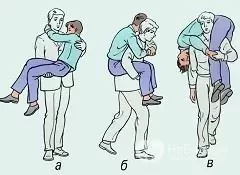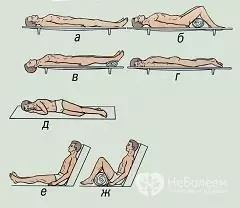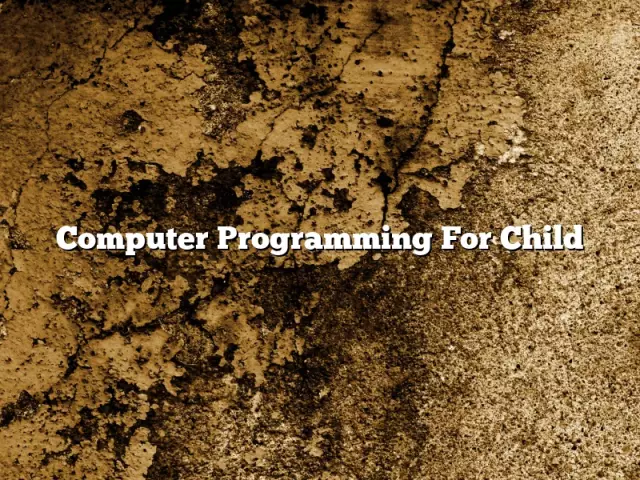- Author Rachel Wainwright [email protected].
- Public 2023-12-15 07:39.
- Last modified 2025-11-02 20:14.
Transportation of victims

In case of serious injuries, as well as if they are suspected, special attention is paid to the transportation of the injured, since improper movement can aggravate the injury, becoming an additional damaging factor. The doctors' recommendation is that specialists should transport a seriously injured person, so it is best not to do it yourself, but call an ambulance. Unfortunately, this is not always possible.
You have to transport the victim on your own in the following situations:
- Immediate danger to life where injury occurs. For example, if the victim is on a railway track, in a burning building, a smoky room, a building that can collapse at any time, etc.
- There is no way for an ambulance to arrive.
In total, there are three types of transportation:
- Emergency. It is carried out in the presence of an immediate threat to life, as quickly as possible, any suitable method is used to remove a person from the danger zone to the nearest safe place. Such transportation can be very traumatic for the victim, but the goal is to save a person's life, therefore, the rules for moving victims in this case are neglected;
- Short term. It is carried out on their own by people who are next to the victim. In this case, there is a need to choose the optimal method for moving the victim so as not to cause him discomfort, if possible, to increase painful sensations, and not to inflict secondary injury. As a rule, in this case, transportation is carried out not too far, but to the nearest place where a person can be provided with professional assistance or where he can wait for it in a safe environment;
- Long-term. Transportation by forces and means of specialists, as convenient and safe as possible for the victim. Usually performed after first aid on the spot and pain relief.
In the event that it is not possible for an ambulance to arrive, long-term transportation has to be carried out by the forces of others.
The recommendations, which will be discussed below, are intended for short-term transportation, since in the conditions of modern life, as a rule, this is what is required from non-specialists.
Preparation for transportation of victims
When preparing to transport a person in need of help, keep in mind:
- The victim must be carefully examined in order to get an idea of the nature of the injuries. The spine, head, neck, chest, abdomen, pelvic region, and limbs should be assessed. Make sure that the person is conscious, if unconscious, you need to check the pulse and breathing;
- If there is a suspicion of a serious injury, multiple concomitant injuries, the victim should be transported only as a last resort, if there is no hope for an ambulance to arrive. With such injuries, the victim should be moved, if possible, in the position in which he is.
General rules for moving victims
The rules and methods for moving victims may differ depending on the nature of the injury (blood loss, fractures, etc.), but there are several general principles:
- When transporting a person with an injury to the cervical spine, his head and neck are immobilized, i.e. fix to impede movement. In all other cases, the victim is transported with his head turned to one side. This is necessary to avoid the ingress of vomit into the respiratory tract, as well as asphyxiation due to the retraction of the tongue;
- A person with a lot of blood loss is moved so that his legs are above the head. This position provides blood flow to the brain;
- When climbing the stairs, as well as when placing in a vehicle, the victim is carried forward with his head, when descending and taking out of the vehicle - feet forward;
- The one who carries the victim in front is appointed the main one, his task is to closely monitor the road, notice obstacles and direct the movement, coordinating the actions of the rest of the rescuers (example of the command: "on the count of three we raise the stretcher - one, two, three!"). In this case, rescuers are strictly forbidden to move "in step";
- The one who carries the victim from behind monitors his condition, and in case of deterioration warns others about the need to stop.
Types of transportation of victims, depending on the injury and condition

It was stated above that in case of serious concomitant injuries, the victim should be moved without changing his position. Now we will consider in what positions the victims should be transported in other, less difficult situations.
-
Stable position on the side. In this position, the victims should move in case of:
a) attacks of vomiting;
b) being in an unconscious state;
c) in case of burns or other non-penetrating injuries to the back of the body (back, buttocks, back of the thighs);
-
A sitting or semi-sitting position is used in such situations:
a) neck injuries;
b) chest trauma;
c) fractures of the clavicle, arms;
-
Supine position with raised legs:
a) abdominal trauma;
b) suspicion of internal bleeding;
c) the presence of large blood loss;
-
Lying on your back with legs slightly apart and a roller placed under your knees ("frog pose"):
a) in case of spinal injuries, spinal cord injury or suspicion of a similar injury;
b) with a fracture of the pelvic bones or suspicion of it.
During transportation, it is necessary to constantly monitor the condition of the victim, remembering that it may deteriorate at any time. If this happens, it is necessary to stop and start carrying out resuscitation measures (mouth-to-mouth breathing, mouth-to-nose breathing, chest compressions). Resuscitation is carried out until a doctor appears or until breathing and pulse are restored.
Found a mistake in the text? Select it and press Ctrl + Enter.






